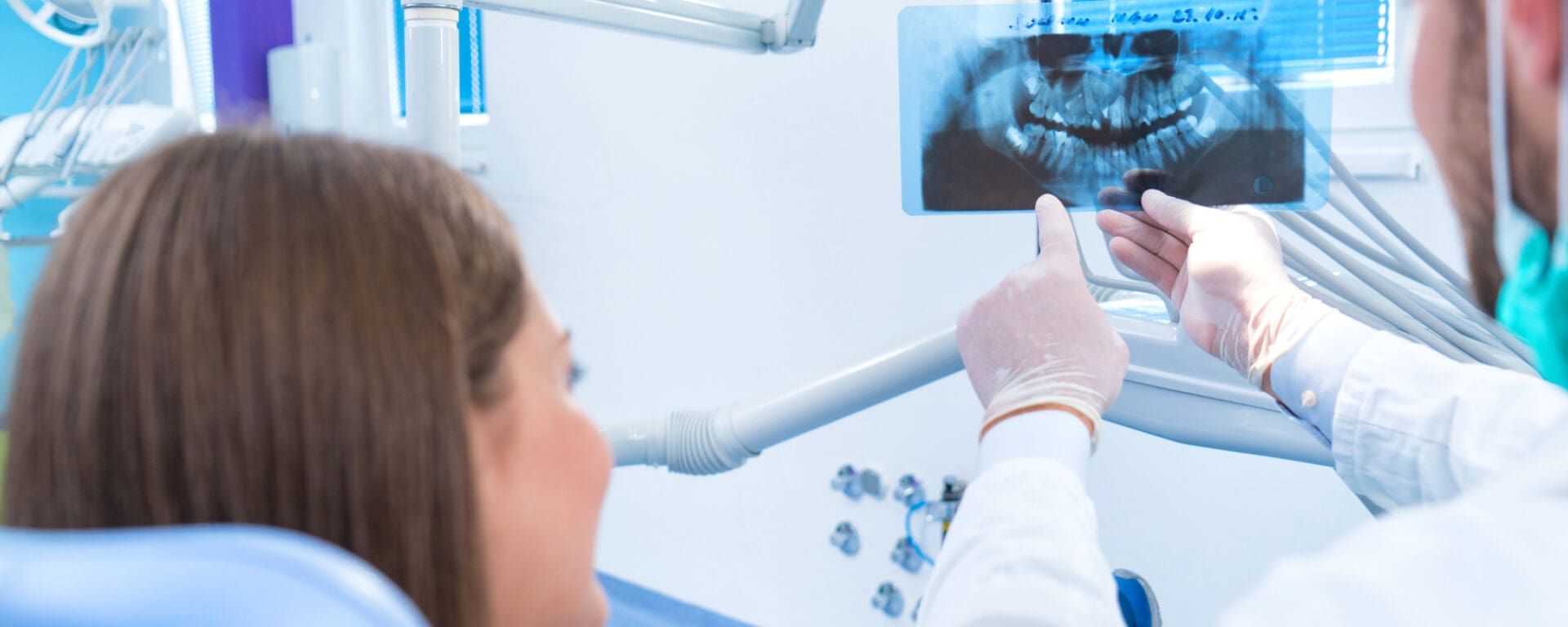Are you in need of an oral surgeon in Austin? Dr. Heiman is an Austin general dentist who has extensive post-graduate training in oral surgery. He prides himself on his ability to perform certain oral surgery procedures in the comfort of his practice.
Our goal at Greenlawn Dental is to save all of your natural teeth, however this is not always possible. Deep cavities, severe periodontal disease and large tooth fractures can condemn a tooth. In addition, impacted wisdom teeth can cause issues to adjacent teeth. Are you experiencing tooth pain? Do you have a broken tooth? Are you in need of oral surgery in Austin? Dr. Heiman has vast experience in oral surgery. He provides Austin oral surgery procedures at his North Austin dental studio in Round Rock.
What does Austin oral surgery include?
In most cases, oral surgery involves extraction of teeth. But it also includes implant placement and other procedures. At Greenlawn Dental, we take pride in being able to treat a wide variety of Austin oral surgery procedures. If you are in need of a simple tooth extraction or an impacted wisdom tooth extraction, we can help! Dr. Heiman practices advanced bone grafting techniques as well as implant placement.
Is sedation necessary for oral surgery?
Sedation during oral surgery depends on your anxiety level. A majority of our patients do very well under local anesthesia. Local anesthesia includes numbing only. You are in no way sedated or impaired. We proceed with your Austin oral surgery treatment with shots to sufficiently numb the area we are treating, but nothing further. Although many patients do well with local anesthetic for single tooth extractions, we typically recommend being sedated for more advanced oral surgery cases. For your comfort, Dr. Heiman is certified to administer oral sedation. This will help to reduce anxiety and make your visit much easier.
What is a bone graft? What will happen if I don’t get a bone graft when my tooth is extracted?
A bone graft at the time of tooth removal is intended to maintain the jaw bone that surrounds the tooth. After tooth removal, loss of stimulation in the area leads to a loss of surrounding bone volume. There is about 25% loss of bone around an extraction site within the first year alone. Over the subsequent years, the jaw bone is expected to lose an additional 4mm of bone height!
Placing a bone graft at the time of tooth extraction is imperative if you would like to have an implant placed in the future. We highly recommend bone grafting when placing anterior bridges. Grafting these areas helps to preserve the architecture of your gums. This will allow us to make you the most natural-looking bridge possible.
Do I need to have my wisdom teeth removed?
Lack of space is the primary reason that wisdom teeth begin to cause problems. By the time wisdom teeth grow in, most adults already have a full complement of teeth. As a result, there is not enough room left to allow the wisdom teeth to erupt. They will often become trapped in a position that they can not be cleaned.
Impacted wisdom teeth can lead to a variety of problems. Adjacent teeth become susceptible to cavities and localized gum disease as they can not be properly cleaned. Another concern is crowding caused by the pressure that the wisdom teeth place on the adjacent teeth. For these reasons it is best to remove malpositioned wisdom teeth before they become a problem. Please contact us as soon as possible if you begin to notice any symptoms related to your wisdom teeth.
Austin Oral Surgeon Frequently Asked Questions
Can a general dentist do oral surgery? What is the difference between a general dentist and an Austin oral surgeon?
Yes, general dentists are able to perform oral surgery services. However, it is important that they have advanced training to properly perform such dental treatment. Dr. Heiman completed a post-graduate residency with extra training in oral surgery procedures. At Greenlawn Dental in Round Rock, you can be confident that your dentist is qualified and knowledgeable. Although Dr. Heiman is comfortable completing many Austin oral surgery procedures at his office, there are some cases that he does recommend referral for an oral surgeon. For patients that are extremely anxious and require IV sedation, we will recommend treatment with a board certified oral surgeon in Austin.
Is oral surgery considered major surgery?
In some cases, we would classify oral surgery treatment as major surgery. However, most procedures performed in the setting of our dental office are typically minor surgeries. We complete wisdom teeth removal and implant placement in an out-patient setting. Major oral surgery procedures are those that require a hospital setting. This would include fractured jaw reparations, orthodontic surgeries or surgery to repair facial trauma.
Do I need a driver for my oral surgery procedure?
If your surgical procedure is being executed using only local anesthetic, you will not need a driver. You will also not need a driver if we are treating you with nitrous oxide. Because of the quick onset and rapid recovery associated with nitrous oxide, it is a great way to alleviate dental anxiety with minimal after-effects. Once we complete your oral surgery procedure, we turn off the nitrous. We then proceed to administer oxygen for five minutes. Afterward, you should be safe to drive!
On the other hand, any procedure that uses oral sedation requires a chaperone. Due to the strength of the medication, you are required to secure a ride to and from your oral sedation appointment. Administered sedation medication will last the duration of your appointment and for a few hours afterwards. Sedation causes you to experience some drowsiness. For your safety, please arrange transportation prior to your oral surgery procedure.
What should I avoid after oral surgery?
The main things to avoid after any oral surgery treatment are smoking, drinking through straws and consuming hard and chewy foods. It is important to maintain a soft diet during the first 7 days after your procedure so that you can heal properly. We also recommend that you avoid eating any food with small particles. These tiny pieces can get lodged into extraction sites. This can lead to post-operative infections.
Additionally, we suggest no vigorous oral rinsing for the day of surgery. After the initial surgery day, it is essential to keep the surgical area clean. You can do this by gently rinsing with warm salt water throughout the day. This is especially imperative after eating.
For a comprehensive list of what to avoid after oral surgery, check out our oral surgery post-operative instructions.
Can I brush my teeth after oral surgery?
Yes, we encourage that you maintain proper oral hygiene after your oral surgery treatment! We recommend that you brush your teeth as you normally would, but to take extra care when cleaning near the dental surgery site. We discourage directly brushing the site of surgery as this will irritate and delay oral healing. Be certain to clean the teeth adjacent to the surgery site. This will serve to remove plaque and prevent bacteria from accumulating. By following these oral hygiene measures, you will help to mitigate your risk of infection.
How long does oral surgery take to heal?
Peak healing time occurs the first 2-3 days following your Austin oral surgery. Swelling and inflammation around the surgical area are the greatest at this point.
If needed, we suggest applying ice packs throughout the first 1-2 days to help alleviate oral swelling. After that, you may benefit from using warm compresses. Compresses stimulate blood flow. This leads to quicker healing.
Generally speaking, the first week after oral surgery will require a change in diet as your body heals. However, many patients can expect to resume eating normally after this period.
Do I need to request time off of work for my oral surgery treatment?
For simple procedures, many patients feel comfortable returning to work the day after their dental surgery. However, more advanced oral treatment may require longer recovery time.
Some wisdom teeth extraction cases may require more healing time. To minimize office visits and reduce overall healing time, we recommend extracting all of your wisdom teeth within one visit. Consequently, we advise that you take a couple of days off from work to recover if possible.
In contrast, implant placement treatment typically results in less post-operative pain. Many dental implant patients can comfortably resume work the next day. You can expect the implant location to be tender, but soreness for this procedure is generally very mild.
Can I work out after oral surgery?
As with any surgical procedure, we propose that you take it easy after your dental surgery procedure. For the first few days following your oral surgery, it is best to avoid any heavy lifting and cardio activity. As you begin to heal and your soreness subsides, you may resume normal daily activities.
How long should I wait to smoke after my dental procedure?
At Greenlawn Dental, we advise you to wait for as long as possible following oral surgery before you resume smoking. It is best to wait at least a week before resuming smoking.
Smoking after dental surgery greatly increases the risk of dry socket. This is a painful condition that delays the healing process. Fortunately, resisting smoking reduces the odds of dry socket developing. Many of our oral surgery patients take advantage of this period post-surgery as motivation to cease smoking!



